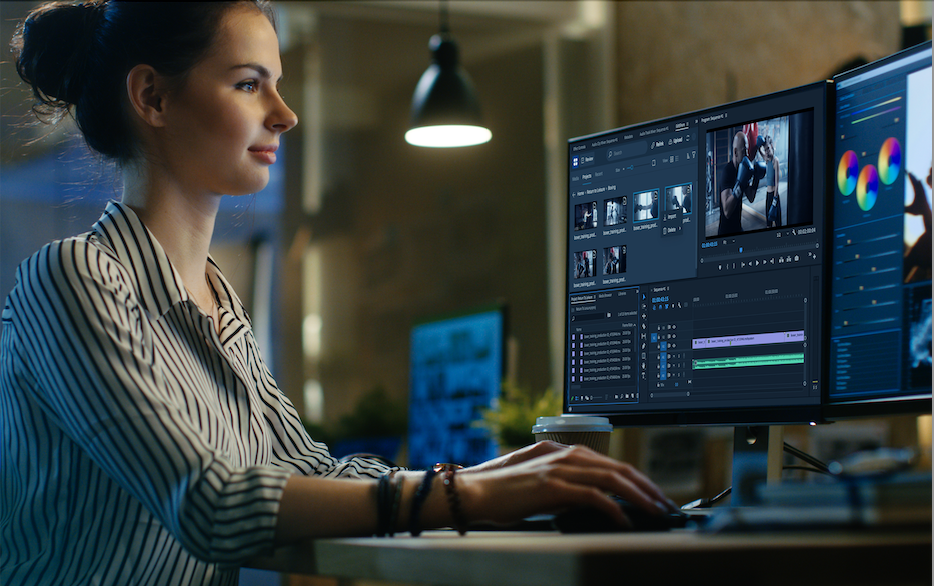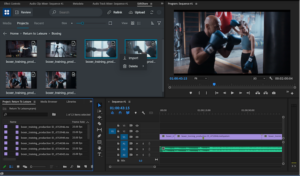
Delivering creativity on budget and without technological constraints

Whether you are making a commercial, a television series or a movie, you generally start with two things. You have a creative concept – and you have a budget. There are many decisions that follow, but they all have to serve those two masters.
Some of the next level of questions are also creative, like location, cast, director, editor and so on. The others will be technical, around how to capture the pictures and sound, and how to manage all the data you generate to be sure you can find what you are looking for.
In an ideal world, you would answer the creative questions, with the technology moulding itself around you. Given how complex any production is, you really do not want the technology dictating how, where and when you are going to work. That is certain to disturb the creative concept, and probably upset the budget.
Let us look at the creative decisions and what the technology needs to do to support it.
First is the choice of camera. Today there is a broad range of cameras, and associated lenses, and directors and cinematographers will use their skills to choose the camera that will best achieve the look they seek.

Video editors must be able to work from anywhere.
Whereas once cameras were pretty uniform — shooting either film or HD video — now each has its own digital file format, which needs additional processing to be viewed and edited. First technical requirement, then, is a means of storing the rushes in the native format of the camera, and of creating viewing and editing copies.
The Better the Metadata, the Easier the Editing
Alongside the video and audio, you also need to store metadata: information about the content. The more metadata you can store with the content the better. Having the director’s and cinematographer’s notes tied to each take makes the life of the editor much easier.
The material you shoot is the primary asset of the production, which is why the business of storing and accessing content is called asset management. It does not matter if the production company is taking charge of the material or if they are passing it over immediately to the post house: it is a valuable – even irreplaceable – asset so must be protected.
Security & Media Asset Management
You should expect the asset management system to provide tools to protect the content, for example by making at least one copy and storing it separately. You might keep one on site or on location, with an immediate backup made somewhere else. People talk a lot about the cloud nowadays, and that would certainly provide the necessary protection. You need to look carefully at the cost of storing all the raw material in the cloud, and in the highspeed data links you need to get it there. That is a decision to be made project by project.
When talking about security, there are actually at least three different considerations. First is that you do not lose anything. Second, that no one else can access the content: you want to keep your intellectual property safe. Third, you want to be sure that nothing gets changed. Malicious people might want to tamper with your content, or even just raise suspicion that it has been altered, which would be a big issue for a documentary maker.
Postproduction From Anywhere
Once shot, you need to move to postproduction. Again, editors, colorists and other post professionals want to focus on creativity and not think about technology, so it is vital that the asset management system supports all the standard tools. They must be integrated seamlessly, so the post professional has all the material they need and the controls they are familiar with.

EditShare CTO Stephen Tallamy
They may not necessarily be in a post house. The editor might be on location for some or all of the shoot. They might want to work from a remote location, or even from home, for part of the project. Again, the technology has to support this, while maintaining all the principles of security, while also allowing viewing copies to be generated at each stage of the post, and delivered to the production team to monitor and manage the output.
When the job is done and the final cut is signed off, there will be deliverables to create. Often there are very many versions of a single project. Making all the different versions is vital but not particularly exciting, so automating as much of this process as possible saves time and money, leaving valuable creative staff free to do what they do best.
In simple terms, all the focus of any project should be on telling the story in the most imaginative, engaging, creative way. Using platforms like EditShare FLOW, all the technology exists to provide for seamless, transparent, secure workflows where every player from camera to delivery works in the way in which they feel most comfortable, using their preferred tools, to deliver outstanding results.
Stephen Tallamy is CTO of EditShare
































Comments (1)
JBerts says:
June 4, 2023 at 3:31 pm
Keeping creativity within budget and overcoming technological limitations is a challenge many professionals face. Writing an essay on this topic can provide valuable ideas and strategies, help students, and inspire. Check out resources and sample essays on our website here. Learn how to unlock creative potential within budget constraints and effectively overcome technological limitations. Get knowledge and skills to implement innovative solutions.